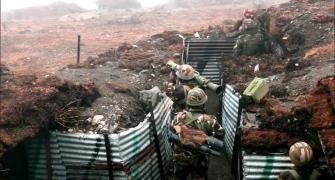In a first, astronomers have captured the photo of a planet in making, located in a star 450 light years away from Earth.

Researchers at the University of Arizona in US imaged the picture of the planet residing in a gap in LkCa1's disk, despite the disk's considerable distance from Earth and its gaseous, dusty atmosphere.
LkCa15 is a young star with a transition disk around it, a cosmic whirling dervish, a birthplace for planets.
Protoplanetary disks form around young stars using the debris left over from the star's formation. Planets then form inside the disk, sweeping up dust and debris as the material falls onto the planets. A gap is then cleared in which planets can reside.
"This is the first time that we've imaged a planet that we can say is still forming," said Steph Sallum, a graduate student at the University of Arizona, who led the research.

Of the roughly 2,000 known exoplanets -- planets that orbit a star other than our Sun - only about 10 have been imaged, and that was long after they had formed, not when they were in the making.
Due to atmospheric turbulence, the mixing of hot and cold air, capturing sharp images of distant objects is difficult.
"When you look through the Earth's atmosphere, what you're seeing is cold and hot air mixing in a turbulent way that makes stars shimmer," said Laird Close, an astronomy professor at the University of Arizona.
"To a big telescope, it's a fairly dramatic thing. You see a horrible-looking image, but it's the same phenomenon that makes city lights and stars twinkle," he added.
The study was published in the journal Nature.








